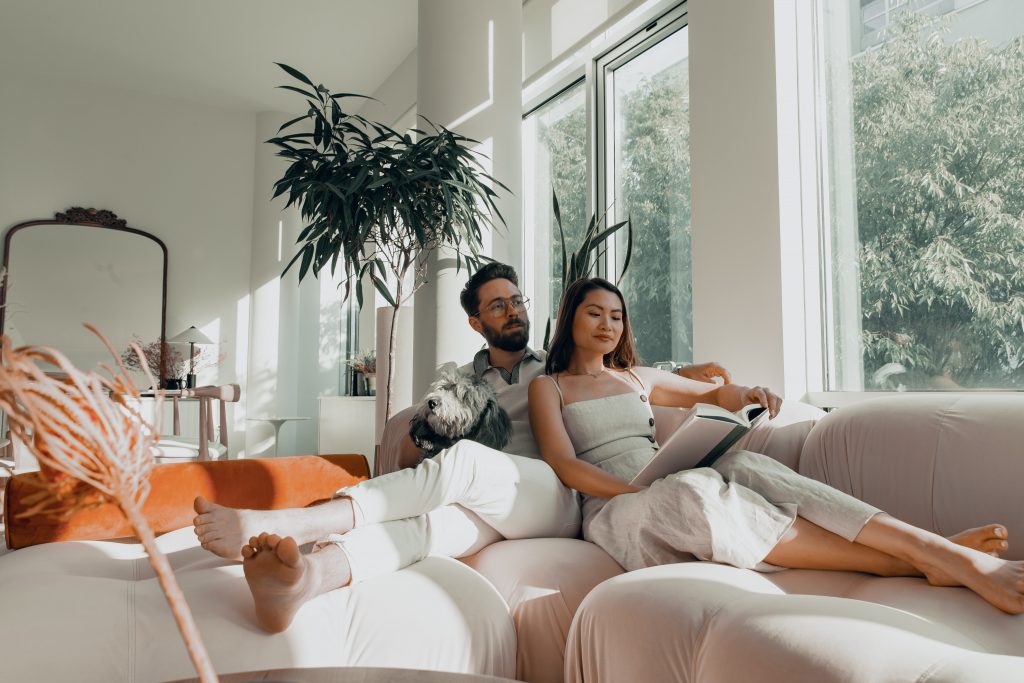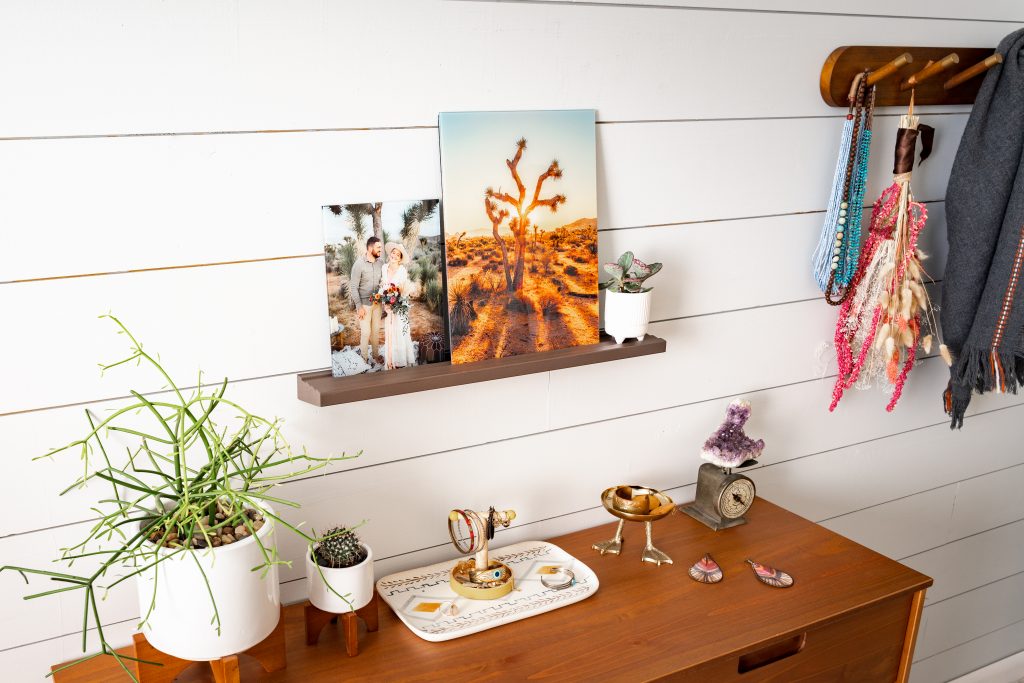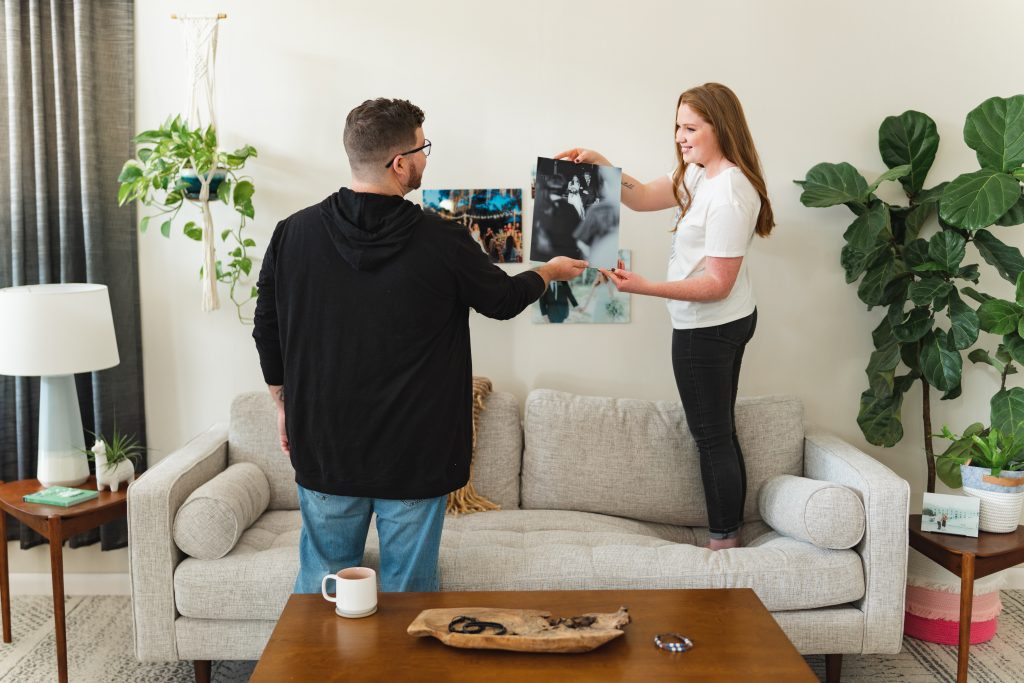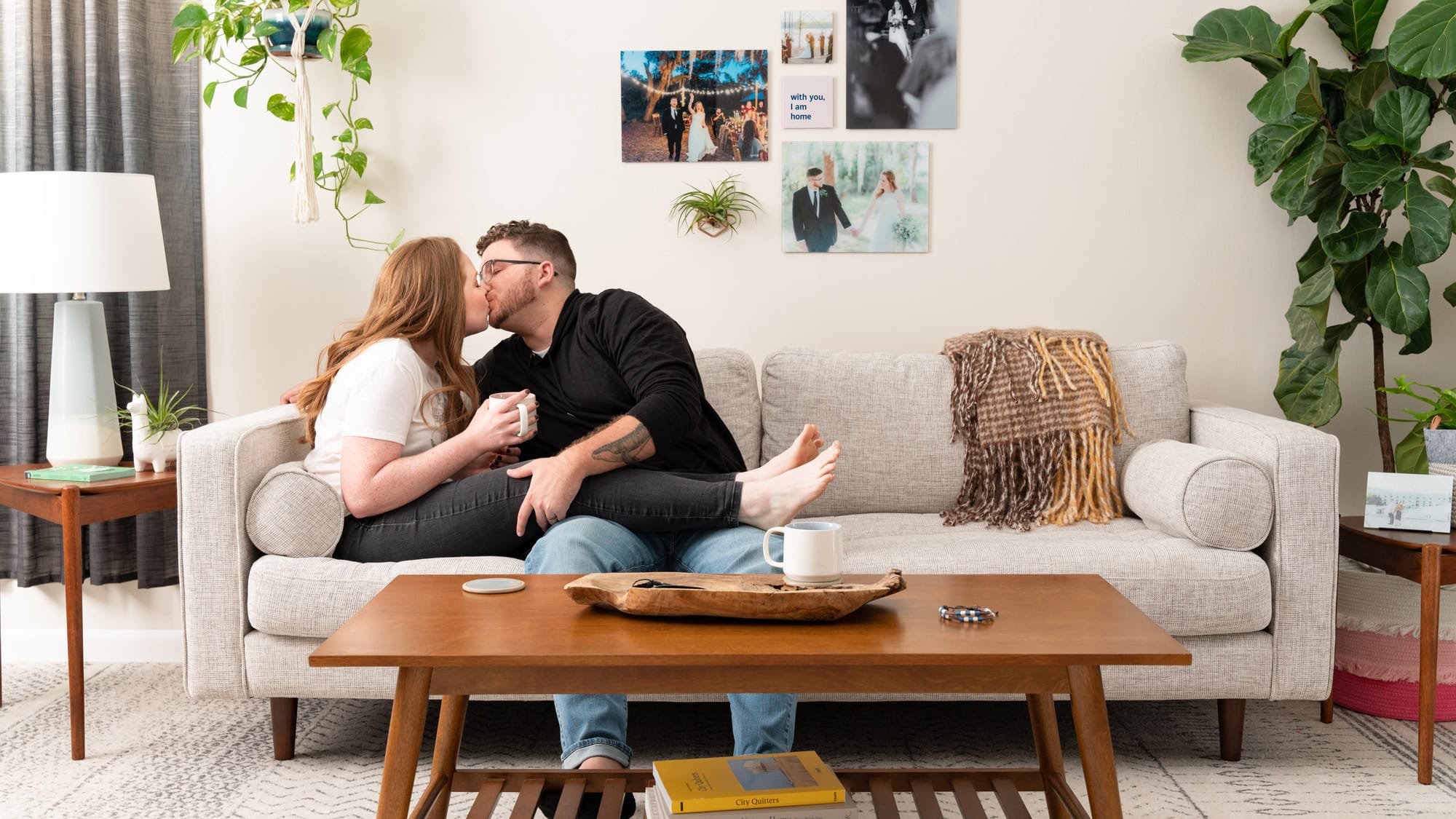**Think you and your partner are the only ones who can’t agree on décor? Guess again!** Disputes over a couch or table are *pretty normal.* Believe it or not, couples argue about home design *a lot.* A 2018 study shows couples have about **seven arguments a month** over how to furnish their home. No surprise there—decorating a living space is already stressful. Add in your partner’s opinions, and it’s a recipe for more headaches. Balancing tastes can be tricky, but knowing you’re not alone might make it a bit easier.
The simple solution would be to split your home down the middle and each pick a side to decorate, right? This straightforward method will only work for those who don’t mind their homes resembling a carnival fun house. We’d rather not be the tiebreakers in a debate over something so personal as your home design, but there are several tips on how to find a design style that reflects both parties’ tastes. The only requirements are that you remain open-minded, get comfortable with the concept of compromise, and prepare to have more fun than you fret!
Before you resort to keeping separate residences or choose an unflattering color scheme just to spite your picky partner, these 9 tips will help you to successfully (and peacefully) mesh your design style with your partner’s aesthetic.

1. Try to find common ground
As much as you’d like to hold onto every single piece that suits your personal design aesthetic, compromising is key. Is there a way to meet in the middle instead of choosing one individual’s design style over another? For instance, you—an unapologetic boho chic enthusiast—begrudgingly agree to live with your partner’s mid-century modern sofa. Roll your eyes? Maybe. But definitely don’t fret over this design dilemma. To mesh your design style with your partner’s aesthetic, simply inject your aesthetic of choice in the surrounding space. For example, display your flowing ivy plants alongside sentimental photos on a wall-mounted shelf. You can also put up macrame wall hangings so that the space feels unified and uniquely decorated. Or purchase a boho-inspired area rug to infuse the clean, modern feel with free-spirited vibes.
2. Choose a color palette
Experts suggest sticking to two primary colors and then incorporating varying shades to promote a stress-free decorating process between partners. This helps you to streamline the decorating process and gives you a basic design blueprint. Don’t let the color palette make you feel boxed in; keep in mind that you still have room to experiment with accessories, textures, patterns, lines, and furniture spacing.
If you can’t settle on a color palette, consider using online color generators to narrow down options. When choosing a color scheme, start with the formal areas first, then apply the 60-30-10 rule. This involves separating colors by dominant (walls), secondary (furniture), and accent. This approach allows you to easily determine which colors go where for every single room, which in turn makes it easier to agree on selecting and placing furniture and accessories.

3. Combine decor styles with accessories
Accents allow a little more freedom to mesh your design style with your partner’s. Whereas your mid-century modern sofa might clash with a vintage coffee table (thereby creating another design dispute), you can easily get away with accents that vary in style. For instance, your beloved minimalist sculpture can be worked into a vignette with varying types of knicknacks, photos, and other personal effects. Combining accessories is an area where you can relax the rules a bit; allow both you and your partner’s personal aesthetic to shine through and try to incorporate decorative tactics that beautifully accentuate both styles. Whether it’s a shelf-lined accent wall where you select the paint color and your partner’s knickknacks line the shelves, or a gallery wall with photos from your respective collections, make your accessorizing unique and personal.
4. Focus on function
You’re less likely to disagree over the purpose of a living room before you debate over its aesthetic (we hope!). So, start your design process by zeroing in on the room’s overall function. After you determine the function, you’ll be able to make decisions like furniture selection and placement, color selection, and lighting choices accordingly.
Next, make these pieces decorative focal points and design around them. If you agree that the living room is for lounging and entertaining, this typically includes big furniture pieces and appliances. If your sofa is more cute than comfy, then your partner may be able to make the case for their plush sectional. Meshing aesthetics in the bedroom? You’ll likely want to include elements that strictly create a relaxing, comfortable environment. In this case, your partner may have to sacrifice their love of loud, neon wall paint for a more subtle option.

5. Consult a professional
If you can’t settle the debate over what goes and what stays where, pay someone to hash it out for you. Seriously, don’t consider this a defeat. Calling in the experts will save you time and frustration when trying to mesh your design style with your partner’s. The ideal expert is unbiased, experienced with an eye for what looks good, and accustomed to working to meet clients’ needs even when they’re at odds over their desired outcome.
If cost is a concern, research affordable designers online. Also, keep in mind that interior designers can help you save on renovation costs as well as increase the value of your home. Additionally, they know how to work within the confines of a budget. Lastly, they have a knack for repurposing those old pieces you or your partner may want to incorporate into your new joint space.
6. Shop for decor together
A couple that shops together, peacefully designs their home together…Okay, we can’t exactly guarantee that claim. However, experts do co-sign a joint shopping trip for couples hoping to successfully blend their design styles. First, make a list of must-have items. Have you and your partner’s respective sofas seen their best days? Can you live with your partner’s hand-me-down dining table? Should any appliances be replaced? Focus on big items like sofas, bedroom decor, tables, and other pieces that will serve as main focal points of each room. Shopping together allows you to test out the furniture in the store to make sure all parties are satisfied before bringing the items home.
Additionally, shopping together for new items eliminates the emotional stress that stems from letting go of pieces you already own. You may find it easier to refresh your space together than to reach a consensus about items already in the home.

7. Compromise on what decor stays and goes
In a perfect world, both you and your partner would keep all of your belongings when trying to mesh your design styles. Every item would cohesively complement your shared space. In reality, however, compromise is key to keeping the peace and bringing your design vision to life. Start with a list of what you’d love to keep and what you can’t wait to toss, prioritizing items you need over those you want. For larger items, start by making a pro/con list of reasons to keep or discard. Base these decisions on non-negotiable factors such as size, ease of mobility, condition, and accessibility. This objective approach will hopefully reduce emotionally charged debates that could potentially stall or derail your design process.
When choosing decorative accessories like rugs, lamps, drapes, mirrors, and artwork, take the same route. Focus on quality and the ability of these accents to add layers and textures to a room. Also, consider the scale and proportion of the accents compared to the room. For instance, avoid hanging large lighting fixtures in small spaces. Another tip is to choose a rug size that’s proportionate to the space it occupies.
8. Strike a balance between traditionally masculine and feminine decor elements
Obviously your tastes will vary regardless of gender. But using traditionally masculine and feminine decor elements as a guideline will help you create a unique, balanced look. For example, a bedroom with dark wood furniture and neutral gray and brown tones can be softened with rich-hued throw pillows, flowy, sheer drapes, metallic accents, curvy flower vases, and elegant lighting fixtures. On the other hand, a room with a light-colored sofa and fun, floral patterns can be transformed into a gender-neutral space by layering geometric patterns over the florals, incorporating an accent wall with a darker paint shade, and finishing off the look with wood and metal decorative accessories.

9. Don’t forget the fun
Instead of approaching this project like a dreaded task, change your perspective. Focus on the creative freedom you have to combine decorative preferences. Embrace the challenge of meshing design ideas; think of it as a creative collaboration rather than a battle over blended perspectives. Keep in mind that this is a space in which you hope to share enjoyable moments and create happy memories. When figuring out how to mesh your design style with your partner’s, focus on bonding over the decorative process. Pick out personalized accents like glass-printed photos of vacations, holidays, celebrations, or other special moments. Maintaining a positive outlook will ensure that you ditch the strife and create a centered living space from a place of love and harmony.






Comments